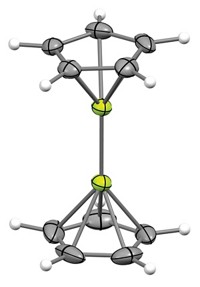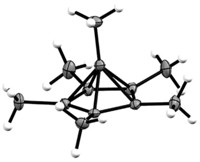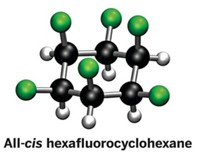Advertisement
Grab your lab coat. Let's get started
Welcome!
Welcome!
Create an account below to get 6 C&EN articles per month, receive newsletters and more - all free.
It seems this is your first time logging in online. Please enter the following information to continue.
As an ACS member you automatically get access to this site. All we need is few more details to create your reading experience.
Not you? Sign in with a different account.
Not you? Sign in with a different account.
ERROR 1
ERROR 1
ERROR 2
ERROR 2
ERROR 2
ERROR 2
ERROR 2
Password and Confirm password must match.
If you have an ACS member number, please enter it here so we can link this account to your membership. (optional)
ERROR 2
ACS values your privacy. By submitting your information, you are gaining access to C&EN and subscribing to our weekly newsletter. We use the information you provide to make your reading experience better, and we will never sell your data to third party members.
Physical Chemistry
Hydroxymethylene Captured
Chemists trap HCOH in a matrix of solid argon at a temperature of 11 K
by Bethany Halford
June 16, 2008
| A version of this story appeared in
Volume 86, Issue 24
In an important fundamental advance, molecule hunters have added a small but long-sought trophy to their collection of ephemeral compounds. For the first time, chemists have managed to capture and study the elusive singlet carbene hydroxymethylene (Nature 2008, 453, 906).
The hunt for hydroxymethylene, or HCOH, has been something of a puzzling pursuit. Theoretical studies suggested the molecule should be stable enough to isolate, but until now all attempts to catch the carbene failed.
To flush out the wily carbene, researchers led by Peter R. Schreiner of Germany's Justus Liebig University and Wesley D. Allen of the University of Georgia first heated glyoxylic acid in a high vacuum. Under these conditions, glyoxylic acid eliminates CO2 to generate HCOH, which the chemists then trapped in a matrix of solid argon at 11 K.
Hydroxymethylene doesn't stay caught for long, though. The carbene rearranges to formaldehyde with a half-life of two hours. This maneuver surprised the researchers because at 11 K there's not enough thermal energy for HCOH to overcome the high rearrangement reaction barrier. Rather, the team determined, the hydroxyl hydrogen bypasses the barrier via quantum tunneling.
In a commentary that accompanies the report, Markku Räsänen of Finland's University of Helsinki notes that the findings "might cast fresh light on the chemistry of these fascinating compounds, and could even lead to the discovery of new reactions."






Join the conversation
Contact the reporter
Submit a Letter to the Editor for publication
Engage with us on Twitter